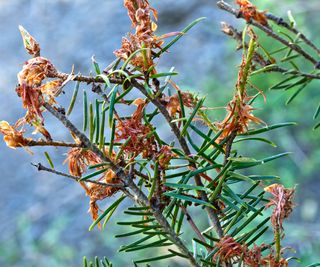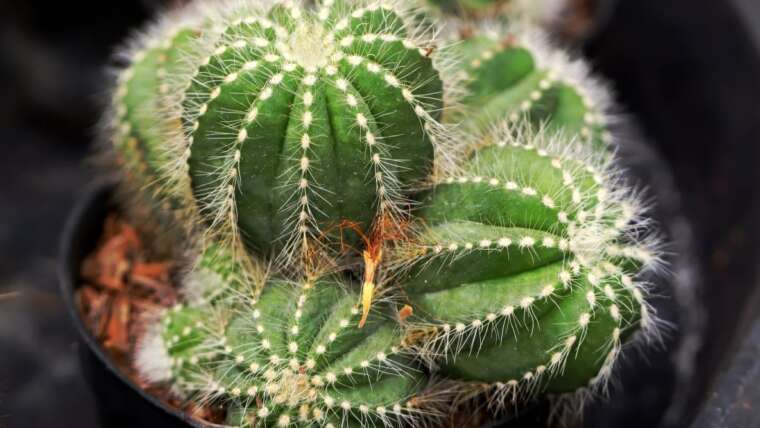We all know oregano is a delicious herb used in preparing many tasty dishes. But, did you know that there are beautiful varieties of the plant that make a wonderful addition to ornamental gardens? Ornamental oregano is a different species from the common edible type.
Ornamental oregano shares the wonderful aroma that we associate with the culinary types. Unlike culinary oregano, these plants have showy, beautiful flowers. Since allowing herbs to flower decreases their flavor, these plants don’t add as much to your marinara. They are, however, a wonderful addition to the flower garden.
Ornamental Oregano Care
These plants are easy to grow with minimal fertilizer.
Oregano is an herbaceous perennial that hails from the Mediterranean region. O. laevigatum, or smooth oregano, is an ornamental species. This species is native primarily to Syria, Lebanon, Cyprus, and Turkey. If we consider its native terrain, it’s easy to determine its needs in the garden.
Ornamental varieties need much the same care as edible types. They thrive in very well-drained soil types and naturally prefer more alkaline soil. Sandy and gravelly soil are ideal for this plant. It works very well in rock gardens and looks gorgeous, spilling over a rock wall. It is also highly attractive to pollinators like bees and butterflies.
Warm sunny climates will find this plant easy to grow and care for. It needs very little fertilizer, a bit of compost worked into the soil at planting time provides plenty of nutrients. The more sun these plants receive, the more wonderful blooms they will produce.
Plant your ornamental oregano in full sun in all but the hottest climates. In Zone 9, give your plants some shade in the afternoon. Once established, this plant is quite drought tolerant. Of course, potted plants need watering more frequently as the soil dries faster.
More than one variety of ornamental oregano has been recognized by the Royal Horticultural Society. Their Award of Garden Merit is a prestigious one given to plants with exemplary qualities. Let’s take a look at these, and some other beautiful varieties of this aromatic and attractive garden plant.
Kirigami
 Aromatic foliage and pink flowers bloom within pale green bracts.
Aromatic foliage and pink flowers bloom within pale green bracts.
‘Kirigami’ is a pretty variety that stays low to the ground. This characteristic makes it an excellent choice for a ground cover. It grows upright, but the flowers and bracts weigh down the ends of branches. This gives it a nice draping effect when it is in bloom. Planted along the top of a rock wall is a stunning spot for this type.
The pale green foliage is smooth and aromatic. It will release even more scent when crushed. ‘Kirigami’ blooms throughout the summer, but it’s not just the flowers that make this plant a marvel in the garden. The small pink flowers bloom nestled within showy bracts.
The bracts have a hop-like shape, forming downward-facing bells. On this variety, these bracts are pale green with a light pink blush. The bracts can last well into the fall and dry beautifully. At the end of the season, cut the stems and dry them for use in dried flower arrangements.
Drops of Jupiter
 The plant’s foliage forms an attractive mound in the spring.
The plant’s foliage forms an attractive mound in the spring.
For an upright, shrubby variety, ‘Drops of Jupiter’ is more than just an intriguing name. Flashy, and finely textured, the foliage of this plant forms an attractive mound in the spring. Before it blooms it makes a very pretty, aromatic addition to the flower garden.
As spring turns to summer, this variety forms deep purple bracts or calyxes at the tops of branches. These bracts are not as large and heavy as some other varieties. This means they won’t weigh down the branches. It will remain upright. The contrast of aubergine bracts and purple flowers with the brightly colored foliage is striking.
‘Drops of Jupiter’ will be most colorful if you plant it in full sun. Ornamental oregano plants are not appealing to deer and rabbits. These are great for gardeners who struggle with these animals. Plant this in spots that don’t get as much attention and enjoy how drought-tolerant and sturdy they are. The profusion of blooms and bracts dress these up as a stunning low hedge.
Kent Beauty
 Vibrant bracts with purple flowers attract bees.
Vibrant bracts with purple flowers attract bees.
‘Kent Beauty’ is very similar to ‘Kirigami’ in growth habit. It is initially an upright grower, but as the large bracts form, the weight pulls branches downward. This creates a lovely draping or trailing appearance. Both varieties are perfect for hanging baskets. Their drought tolerance makes them ideal for this purpose.
Small, tubular flowers are purple and highly appealing to bees. The colorful bracts mostly obscure the flowers from view. Shades of rose and lavender, accented by cream make these hop-like bracts stand out against the pale green foliage.
This variety is a winner of the RHS Award of Garden Merit. These awards are given to the most beautiful and exemplary plants. ‘Kent Beauty’ is attractive well into the fall months with the bracts remaining intact. Its compact size makes this a nice border. Plant it around an outdoor living area to enjoy its spicy fragrance.
Herrenhausen
 The plant’s aromatic leaves turn a striking red in the fall.
The plant’s aromatic leaves turn a striking red in the fall.
Another upright variety, ‘Herrenhausen’ has tall, slender stems with delicate, dark green foliage. The foliage is finer and less dense than other varieties. This makes it a great choice for mixed beds. The looser branches bob about in a breeze, creating a lot of movement and texture in the garden.
Bees adore the showy purple flowers. These small blooms grow in clusters at the top of branching stems. The dark purple bracts endure long after the flowers finish blooming. You can expect beautiful colors from this plant beginning in June. It will last through to the first frost.
In the fall, this plant’s colors don’t just come from the leftover bracts. The aromatic leaves also turn a deep shade of red in the fall, as the daylight hours shorten. This is a gorgeous plant to add to your pollinator garden, where it will be all the rage. It is deer-resistant, as well.
Amethyst Falls
 This hardy, vigorous plant requires little care.
This hardy, vigorous plant requires little care.
You’ll get the best of both worlds with ‘Amethyst Falls’ oregano. It grows to a slightly taller one foot but also has the beautiful weeping quality of the shorter varieties. This variety also has showier flowers. The larger, purple blooms show clearly between pale green, hop-like bracts. The bracts take on a purple to rosy hue as they age.
Expect ‘Amethyst Falls’ to produce pink flowers in the summer while the bracts remain intact into the fall. The draping of the branches is where this variety gets its name. The combination of purplish pink flowers and bracts does indeed resemble a waterfall.
This variety has a great reputation. It is a very tough and vigorous plant that creates a lot of show with very little care. It is not fond of humid climates, so in this environment, make sure you have very good air circulation. This also makes a wonderful hanging plant or a spiller in container arrangements.
Maintaining Your Ornamental Oregano
 Regular pruning is essential to prevent flowering.
Regular pruning is essential to prevent flowering.
Aside from the occasional watering during dry weather, this plant needs little attention. As I mentioned, you won’t need to fertilize these, as they prefer poor soil types. They are deer-resistant and are relatively pest-resistant across the board. Spider mites can be an issue, so keep an eye out for signs of these insects.
Culinary oregano requires regular pruning to keep the flowers away. Allowing your herbs to flower sends nutrients away from the foliage into the blooms. This detracts from the flavor of the leaves. With ornamental varieties, this is not a concern, as the flowers are the goal. You can allow this plant to grow unchecked from spring through to fall.
Wait until late spring or early winter to prune your plant. Before the plant begins a new growth phase, prune all branches back to about six inches long. This will promote new, healthy growth and branching for a fuller plant. That’s it!
Final Thoughts
There is no question that oregano is a tasty herb, but it’s not just for kitchens. Ornamental oregano has great qualities that make it a perfectly low-maintenance, flowering perennial. Grow this fun plant in spaces where you can enjoy the fragrance or where you need something drought-tolerant. Don’t worry about pests, diseases, and animals destroying this plant. You won’t regret adding this flowering herb to your beds and containers.




